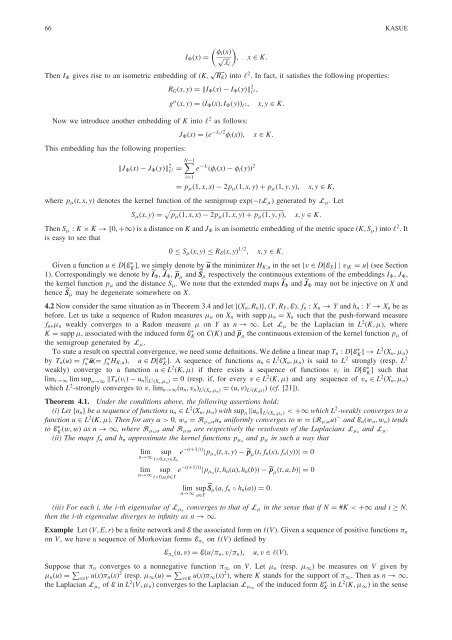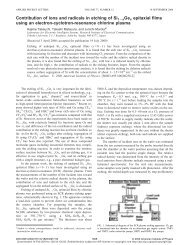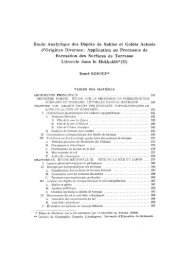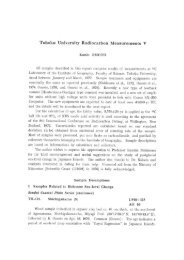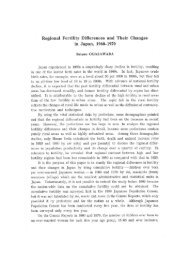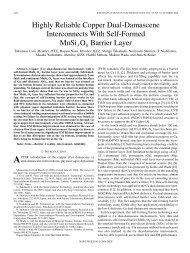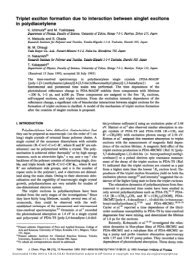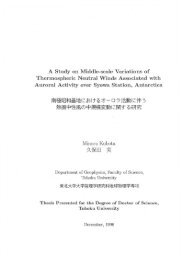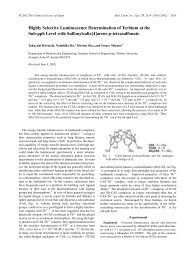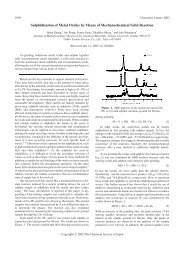Variational Convergence of Finite Networks
Variational Convergence of Finite Networks
Variational Convergence of Finite Networks
Create successful ePaper yourself
Turn your PDF publications into a flip-book with our unique Google optimized e-Paper software.
66 KASUE<br />
I ðxÞ ¼<br />
iðxÞ<br />
p ffiffiffiffi ; x 2 K:<br />
i<br />
ffiffiffiffiffi<br />
RE<br />
Then I<br />
p<br />
gives rise to an isometric embedding <strong>of</strong> ðK;<br />
2 Þ into ‘ . In fact, it satisfies the following properties:<br />
RGðx; yÞ ¼kI ðxÞ I ðyÞk 2 ‘ 2;<br />
g ðx; yÞ ¼ðI ðxÞ; I ðyÞÞ ‘ 2; x; y 2 K:<br />
Now we introduce another embedding <strong>of</strong> K into ‘ 2 as follows:<br />
J ðxÞ ¼ðe i=2<br />
iðxÞÞ; x 2 K:<br />
This embedding has the following properties:<br />
kJ ðxÞ J ðyÞk 2 XN 1<br />
‘ 2 ¼<br />
i¼1<br />
e i ð iðxÞ iðyÞÞ 2<br />
¼ p ð1; x; xÞ 2p ð1; x; yÞþp ð1; y; yÞ; x; y 2 K;<br />
where p ðt; x; yÞ denotes the kernel function <strong>of</strong> the semigroup expð tL Þ generated by L . Let<br />
S ðx; yÞ ¼ ffiffiffiffiffiffiffiffiffiffiffiffiffiffiffiffiffiffiffiffiffiffiffiffiffiffiffiffiffiffiffiffiffiffiffiffiffiffiffiffiffiffiffiffiffiffiffiffiffiffiffiffiffiffiffiffiffiffiffiffiffiffiffiffiffiffiffiffiffiffiffiffi<br />
p<br />
p ð1; x; xÞ 2p ð1; x; yÞþp ð1; y; yÞ;<br />
x; y 2 K:<br />
Then S : K K !½0; þ1Þ is a distance on K and J is an isometric embedding <strong>of</strong> the metric space ðK; S Þ into ‘ 2 .It<br />
is easy to see that<br />
0 S ðx; yÞ REðx; yÞ 1=2 ; x; y 2 K:<br />
Given a function u 2 D½EKŠ, we simply denote by eu the minimizer HK;u in the set fv 2 D½EXŠ jvjK ¼ ug (see Section<br />
1). Correspondingly we denote by eI , eJ , ep and eS respectively the continuous extentions <strong>of</strong> the embeddings I , J ,<br />
the kernel function p and the distance S . We note that the extended maps eI and eJ may not be injective on X and<br />
hence eS may be degenerate somewhere on X.<br />
4.2 Now consider the same situation as in Theorem 3.4 and let fðXn; RnÞg, ðY; RY; EÞ, fn : Xn ! Y and hn : Y ! Xn be as<br />
before. Let us take a sequence <strong>of</strong> Radon measures n on Xn with supp n ¼ Xn such that the push-forward measure<br />
fn n weakly converges to a Radon measure on Y as n !1. Let L be the Laplacian in L2ðK; Þ, where<br />
K ¼ supp , associated with the induced form EK on CðKÞ and ep the continuous extension <strong>of</strong> the kernel function p <strong>of</strong><br />
the semigroup generated by L .<br />
To state a result on spectral convergence, we need some definitions. We define a linear map Tn : D½EKŠ!L2ðXn; nÞ<br />
by TnðuÞ ¼ fn ~uð¼ fn HK;uÞ; u 2 D½EKŠ. A sequence <strong>of</strong> functions un 2 L2ðXn; nÞ is said to L2 strongly (resp. L2 weakly) converge to a function u 2 L2ðK; Þ if there exists a sequence <strong>of</strong> functions vi in D½EKŠ such that<br />
limi!1 lim supn!1 kTnðviÞ unkL2ðXn; nÞ ¼ 0 (resp. if, for every v 2 L2ðK; Þ and any sequence <strong>of</strong> vn 2 L2ðXn; nÞ<br />
which L2-strongly converges to v, limn!1ðun; vnÞL2ðXn; nÞ ¼ðu; vÞL2ðK; Þ) (cf. [21]).<br />
Theorem 4.1. Under the conditions above, the following assertions hold:<br />
(i) Let fung be a sequence <strong>of</strong> functions un 2 L2ðXn; nÞ with supn kunkL2ðXn; nÞ < þ1 which L2-weakly converges to a<br />
function u 2 L2ðK; Þ. Then for any >0, wn ¼ R n; un uniformly converges to w ¼ðR ; uÞ and Enðwn; wnÞ tends<br />
to EKðw; wÞ as n !1, where R n; and R ; are respectively the resolvents <strong>of</strong> the Laplacians L and L .<br />
n<br />
(ii) The maps fn and hn approximate the kernel functions p and p in such a way that<br />
n<br />
lim<br />
sup<br />
n!1 t>0;x;y2Xn<br />
e ðtþ1=tÞ jp n ðt; x; yÞ ep ðt; fnðxÞ; fnðyÞÞj ¼ 0<br />
lim<br />
n!1 sup e<br />
t>0;a;b2Y<br />
ðtþ1=tÞ jp ðt; hnðaÞ; hnðbÞÞ n ep ðt; a; bÞj ¼ 0<br />
lim eS ða; fn hnðaÞÞ ¼ 0:<br />
n!1 sup<br />
a2Y<br />
(iii) For each i, the i-th eigenvalue <strong>of</strong> L converges to that <strong>of</strong> L n<br />
then the i-th eigenvalue diverges to infinity as n !1.<br />
in the sense that if N ¼ #K < þ1 and i N,<br />
Example Let ðV; E; rÞ be a finite network and E the associated form on ‘ðVÞ. Given a sequence <strong>of</strong> positive functions<br />
on V, we have a sequence <strong>of</strong> Morkovian forms E on ‘ðVÞ defined by<br />
n<br />
n<br />
E ðu; vÞ ¼Eðu= n n; v= nÞ; u; v 2 ‘ðVÞ:<br />
Suppose that n converges to a nonnegative function 1 on V. Let n (resp. 1) be measures on V given by<br />
nðuÞ ¼ P<br />
x2V uðxÞ nðxÞ2 (resp. 1ðuÞ ¼ P<br />
x2K uðxÞ 1ðxÞ2Þ, where K stands for the support <strong>of</strong> 1. Then as n !1,<br />
the Laplacian L <strong>of</strong> E in L n 2ðV; nÞ converges to the Laplacian L <strong>of</strong> the induced form E 1 K in L2ðK; 1Þ in the sense


